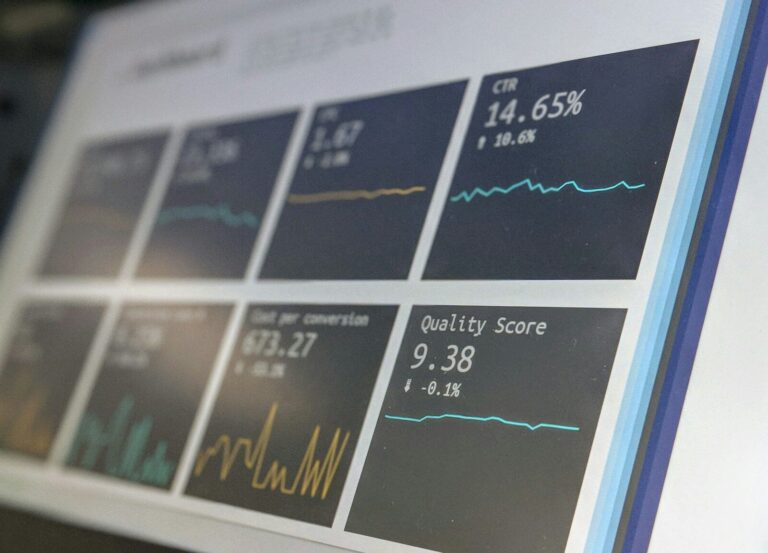Navigating Volatility: How Dynamic Pricing and Adaptive Strategies Drive Revenue Growth

Weeks ago, McKinsey & Company had a webinar where industry leaders in marketing and sales roles talked about how they have waltzed through the previous volatile economy and what their current approach is.
One of the core areas of discussion was Understanding the concept of Pricing Strategy to help in your go-to-market approach.

Rather than speak from the global viewpoint, would love to speak from the POV of a Pan African business owner and how this applies to the Nigerian-based business serving the local market. This article applies to all market types and sizes irrespective of location.
In the Nigerian market, prices of goods and services can fluctuate wildly, depending on a variety of factors. This volatility can make it difficult for businesses to set prices that are both profitable and competitive.
However, leveraging pricing strategy can help businesses thrive in this volatile market: dynamic pricing. Dynamic pricing involves adjusting prices in real-tme based on market conditions. This means that businesses can set prices that are more likely to be accepted by customers, while still maximizing their profits.
Let’s take a look at a real-world example of how dynamic pricing can be used to benefit businesses in the Nigerian market.
The Case of the Local Airlines
Imagine that you are an airline operating in Nigeria. You know that the price of oil is volatile and that this can have a significant impact on your fuel costs. You also know that the demand for flights fluctuates throughout the year, with peak demand during the holiday season.
If you use a static pricing model, you will set your prices based on historical data. However, this may not be the best approach in a volatile market. For example, if the price of oil goes up, your fuel costs will go up, and you may need to raise your prices. However, if you raise your prices too much, you may lose customers.
Dynamic pricing can help you avoid this problem. By adjusting your prices in real-time based on the price of oil and the demand for flights, you can ensure that you are always getting the best price for your tickets. This will help you maximize your profits and maintain a competitive edge in the volatile Nigerian market.
The Key Stakeholders in Pricing Strategy
Pricing is a critical component of any organization’s success. By setting the right prices, businesses can maximize their profits and maintain a competitive edge. However, pricing is not just about setting a price and forgetting about it. It is an ongoing process that requires the involvement of multiple stakeholders.

The following are the key stakeholders in pricing strategy:
- The CEO: The CEO is ultimately responsible for the success of the organization, and pricing is a key factor in that success. The CEO must approve the pricing strategy and ensure that it is aligned with the organization’s overall goals.
- The marketing team: The marketing team is responsible for developing and executing the pricing strategy. They must understand the target market, the competitive landscape, and the organization’s cost structure. They must also be able to communicate the pricing strategy to the sales team and other stakeholders.
- The sales team: The sales team is responsible for selling the product or service at the agreed-upon price. They must be able to understand and explain the pricing strategy to customers. They must also be able to negotiate prices with customers, as needed.
- The finance team: The finance team is responsible for tracking the costs of goods sold and the revenue generated from sales. They must also be able to forecast future costs and revenue, so that the pricing strategy can be adjusted as needed.
- The IT team: The IT team is responsible for developing and maintaining the software that is used to implement the pricing strategy. They must also be able to provide data and insights to the marketing and sales teams, so that they can make informed decisions about pricing.
- Product managers: Product managers are responsible for developing and managing the product portfolio. They must understand the value of the products or services that the organization offers, so that they can set prices that are fair and competitive.
- Customer service team: The customer service team is responsible for handling customer inquiries and complaints about pricing. They must be able to explain the pricing strategy to customers and resolve any issues that arise.
- Legal team: The legal team is responsible for ensuring that the pricing strategy complies with all applicable laws and regulations. They must also be able to provide advice to the marketing and sales teams on pricing-related legal issues.
By involving the right stakeholders and ensuring that the pricing strategy is aligned with the organization’s overall goals, businesses can maximize their profits and maintain a competitive edge.

Here are some additional tips for creating a successful pricing strategy:
- Understand your target market: Who are your customers? What are their needs and wants? What are their price sensitivities?
- Analyze the competitive landscape: What are your competitors charging for similar products or services? How are they pricing their products?
- Consider your cost structure: How much does it cost you to produce or deliver your products or services?
- Set realistic goals: What are your financial goals for your pricing strategy? Do you want to maximize profits? Increase market share?
- Be flexible: The market is constantly changing, so your pricing strategy should be flexible enough to adapt to changes.
- Monitor your results: Track your pricing strategy and make adjustments as needed.
How to Use Dynamic Pricing in the Nigerian Market

Here are some tips on how to use dynamic pricing in the Nigerian market:
- Start by collecting data on market conditions and customer behavior. This data will help you to understand how prices fluctuate in the Nigerian market and how customers perceive value.
- Use a software solution or manual process to adjust prices in real time. This will ensure that you are always getting the best possible price for your offerings.
- Be transparent with customers about your pricing strategy. This will help to build trust and loyalty with your customers.
- Monitor the results of your dynamic pricing strategy. This will help you to determine whether or not the strategy is working and to make adjustments as needed.
Software Tools for Dynamic Pricing
There are a number of software tools that can automate dynamic pricing. Some of the most popular tools include:
Prisync | Dynamic Pricing: Prisync is a cloud-based dynamic pricing tool that helps businesses to set and adjust prices in real time based on market conditions. Prisync offers a variety of features, including competitor price monitoring, price optimization, and price alerts.Sniffie: Sniffie is another cloud-based dynamic pricing tool that helps businesses to set and adjust prices in real time based on market conditions.
The Future of Dynamic Pricing
Dynamic pricing is a rapidly evolving field. As technology advances, new ways of implementing dynamic pricing will emerge. This will make dynamic pricing even more beneficial for businesses in volatile markets.
For example, imagine that you are a retailer in Nigeria. You know that the demand for your products fluctuates throughout the day, with peak demand during the morning and evening rush hours. You also know that the weather can have a significant impact on your sales.
In the future, you may be able to use dynamic pricing to adjust your prices in real time based on the demand for your products and the weather conditions. This would allow you to maximize your profits and maintain a competitive edge in the volatile Nigerian market.
Conclusion
Businesses that are able to embrace dynamic pricing will be well-positioned to succeed in the future. They will be able to maximize their profits, maintain a competitive edge, and build trust and loyalty with their customers.
Dynamic pricing is a powerful tool that can help businesses thrive in a volatile market. By adjusting prices in real time based on market conditions, businesses can maximize their profits and maintain a competitive edge. Dynamic pricing is a valuable tool for businesses in the Nigerian market, where prices are constantly fluctuating. By implementing dynamic pricing, businesses can ensure that they are always getting the best possible price for their offerings.
About the Author
 Omotola Dorcas is a marketing and business development expert with 9+ years of experience in web3, analytics, cloud computing, consulting, and capacity development.
Omotola Dorcas is a marketing and business development expert with 9+ years of experience in web3, analytics, cloud computing, consulting, and capacity development.
She is the founder of Virtual Domain Agency, a marketing and business development agency supporting African tech businesses to launch, grow, and scale.
Omotola has a proven track record of business growth and expansion. Her passion lies in supporting the private sector and startups within the business ecosystem through strategy and implementation to achieve their business goals.







